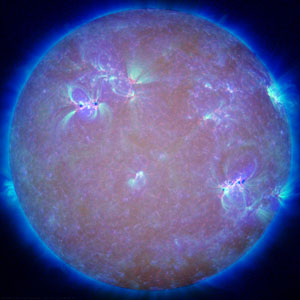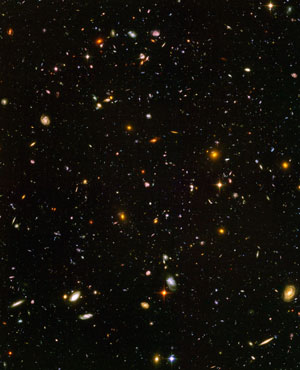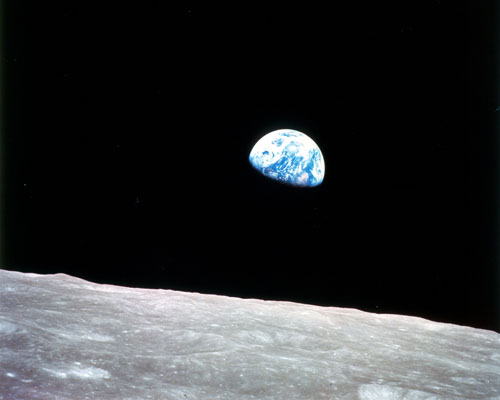From People to Black Holes
I am made from the dust of the stars, and the oceans flow in my veins.
-RUSH
When people think of NASA, they usually think of astronauts. However, NASA also conducts research into topics like astronomy, planetary sciences, space physics, and Earth sciences—or more simply put, NASA studies Earth and Space.

The Sun, seen in visible and ultraviolet light.(Image credit: Bryan Mendez, UC Berkeley/NASA)
At the heart of NASA’s scientific pursuits are several big questions:
- How did the Universe originate and evolve to produce the galaxies, stars, and planets we see today?
- How did the Solar System form and evolve?
- How is the Earth system changing and how will it change in the future?
- What causes the Sun to vary?
- What are the Sun’s impacts on humanity, Earth, and the Solar System?
- How do matter, energy, space, and time behave under the extraordinarily diverse conditions of the cosmos?
- How did life begin and evolve on Earth, and has it evolved elsewhere in the Solar System?
- What are the characteristics of planetary systems orbiting other stars, and do they harbor life?
The answers to these questions are ultimately knowable because we can learn about the natural laws that govern nature here on Earth and apply them to everything in the Universe that we observe.

This view of nearly 10,000 galaxies is the deepest visible-light image of the cosmos. Called the Hubble Ultra Deep Field, this galaxy-studded view represents a "deep" core sample of the universe, cutting across billions of light-years. (Image credit: NASA/ESA/STScI/S. Beckwith)
The Universe is vast and wondrous, filled with things both familiar and exotic, from people to black holes. The Universe changes; it has a past, a present, and a future. We see only small pieces of the enormous cosmos around us, but within this view are the keys to understanding how its history unfolds. Our growing knowledge about the Universe comes from our use of tools developed to extend our senses. We build sensors to help us detect forms of energy and matter that our senses cannot perceive. We put these instruments aboard crafts that journey into space, where it is difficult for humans to go. These crafts visit other planets, they study light and particles coming from the Sun or deep space that do not reach Earth’s surface, and they gaze down on the Earth, giving us a more complete view of our home in the Universe.
So far, we have learned that the observable Universe is some 13.7 billion years old. It is expanding and cooling at an ever-increasing rate and will never stop. In the past, it was much smaller and hotter. As the Universe expanded and cooled, some matter formed into simple atoms. These atoms drew together under gravity’s influence to form stars and giant collections of stars, called galaxies. The galaxies clustered together in great web-like strands. Mysterious and dark forms of matter and energy are thought to be responsible for the growth of this structure. During successive generations of star birth and death, more complex atoms were built from the simpler ones. Rocky planets were able to form out of the dust made of these more complex atoms. Our Earth was born about 4.5 billion years ago, along with the Sun and the rest of the Solar System. By 3.7 billion years ago life, in the form of single-celled bacteria, had taken hold on our planet. Earth has been a restless planet, constantly changing its surface, and life has changed with it. Our species appeared only some 195,000 years ago and looked to the sky, wondering what it all means. Along the way, we have discovered that we are all made of stardust!
The more we learn about the Universe, the more we discover just how much more there is to learn.

This view of the rising Earth greeted the Apollo 8 astronauts as they came from behind the Moon after the fourth nearside orbit. (Image credit: NASA)
1366